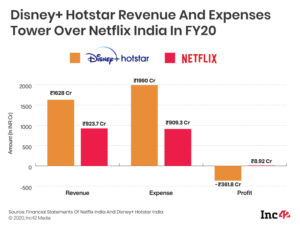Using social media is relatively easy and straightforward for most of us. A significant part of the American population would log on to their favorite social media platforms several times a day. That is why social media marketing is one of the best ways to popularise any business.
But have you ever given any thought to those people whose experience with social media is not the same as ours? Are you even aware that almost 26% of the American population is living with disabilities? Have you considered whether your social media marketing post will be accessible to a blind or a deaf person?
If this is the first time you’re thinking about it, you are not alone. But it is never too late to start ensuring that your social media marketing is accessible to users with disabilities. That way, your digital ad campaigns will be able to target up to 61 million adult Americans.
Apart from targeting a huge untapped market, it will also help you become legally compliant. But we will get to that after we discuss the best practices to make your social media marketing more accessible.
Describe Your Images
Most of your social media marketing posts must include images or infographics to attract customers. But did you know blind users who cannot see your images use assistive technologies called screen readers to describe a website to them?
Unfortunately, screen readers cannot read pictures, so it is necessary to include an image description. Screen readers also use the alternative text feature to read out an image description to a blind user. Facebook and Instagram usually add an automatic alternative text to the images, but you can edit that by clicking on advanced settings when you add a post.
The automatic alternative text feature is based on image recognition technology, which generates a generalized description. That is why you should always add an image description to ensure that blind users get the visual information. Also, ensure that you write image descriptions for your tweets so that screen readers can read them out.
Add Transcriptions and Closed Captions for Videos
We understand that videos have a better impact on your target audience. But have you considered whether the marketing impact will be the same for people with audio or visual impairments? So, start using tools to generate transcriptions and closed captions for your videos before you post them on social media.
If you have a business page on Facebook, you can use the subtitles and captions option to generate them automatically. However, it might produce results far from precise, so make sure you review them before finalizing your post. Auto captioning is not very good at understanding accents either and may end up translating into gibberish.
Use Camelcase for Hashtags
Have you ever noticed long hashtags that are extremely difficult to read? We would like you to check out the Twitter feed of some web accessibility solution providers and notice their hashtags.
A few of these solution providers are industry leaders and experts in automated web accessibility, making business websites accessible to people with disabilities. You will notice how easy it is to read each of their hashtags. Instead of using hashtags like #WEBACCESSIBILITY or #MACHINELEARNING, they have used #WebAccessibility and #MachineLearning to make it convenient to read.
These camelcase hashtags also assist screen readers to read out these hashtags for users with visual disabilities.
Try to Avoid Emojis
Screen readers are set up to read out emojis automatically, which can be quite disturbing to people with disabilities. Can you imagine a computer speaker repeating ‘scream’ five times? So try to avoid emojis in your social media marketing posts as much as possible.
Avoid Inspiration Porn
‘Inspiration porn’ is when you portray a disabled person as inspiring just because they are disabled. Even though you may mean well, it could cause discomfort or embarrassment to people with disabilities. Therefore, before you share a story about a disabled person, make sure that you do not portray disability as a burden.
Avoid pictures or videos of people helping a disabled person complete basic activities like eating. Instead of just talking about how a disabled person achieved something, mention his or her ideas. Also, make sure you have their consent before you post anything on social media.
Use Trigger Warnings
Use trigger warnings in all caps before your post if it contains sensitive topics. Trigger warnings are useful for people who have suffered trauma in the past as well as those who suffer from anxiety disorders or ADHD.
So take some time to judge the accessibility of your social media marketing posts before you make them live. Apart from your digital ad campaigns, your website should also be optimized for accessibility, as social media campaigns are often meant to generate more web traffic.
As we mentioned before, website accessibility is necessary for legal compliance in the United States. According to the Americans with Disabilities Act, your business website should be accessible to users with various types of disabilities. It must meet the current Web Content Accessibility Guidelines to be safe from lawsuits or an ADA demand letter.
But we understand that redesigning a website could seem complicated and expensive to you. Luckily, you can use accessibility solutions from companies like accessiBe to make your website ADA and WCAG compliant. Making an effort to ensure website accessibility can go a long way to create a positive image of your brand and company in the public eyes.










